KOKOOTO – Kokoro no oto(the sound of heart) – will introduce delicate and beautiful Japanese culture to people overseas,focusing on traditional musical instruments.Today,we will focus on Ms.Asuka Hosokawa (KIMONON), a japanese harp( koto ) and shamisen player and the editor-in-chief of this media site.
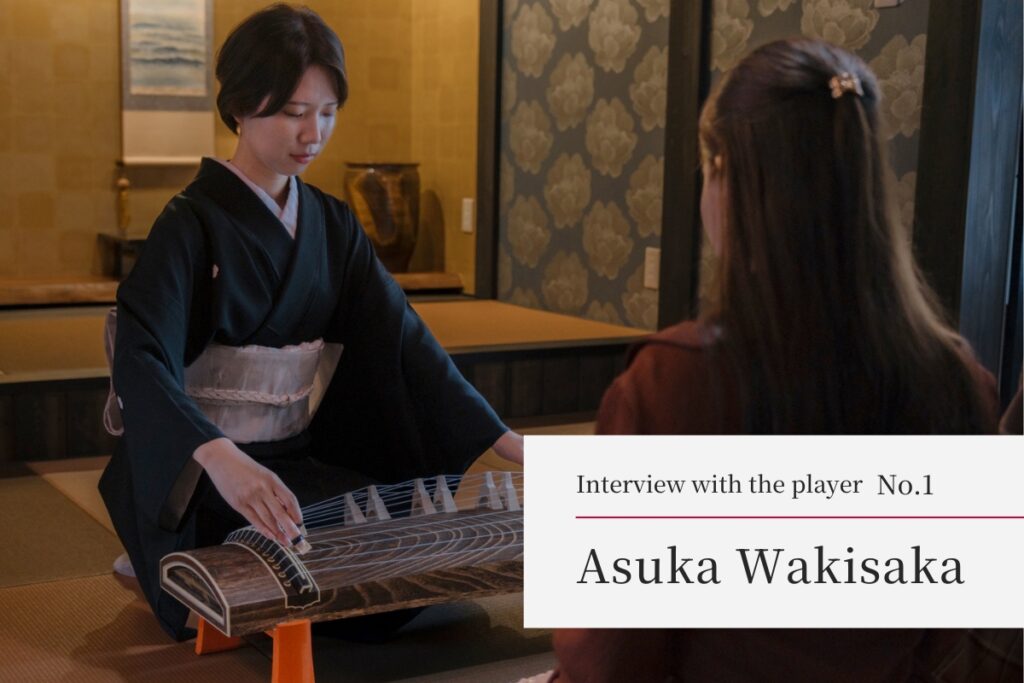
- -Biography of Asuka Hosokawa-
- ▼Q How did you start playing Japanese instruments?
- ▼Q What made you decide to become a professional?
- ▼Q What is your hometown Hiroshima like?
- ▼Q What is the most memorable performance stage you have ever given?
- ▼Q What are your Main activities ?
- ▼Q Any thoughts on your activities?
- ▼Q What do you think of future Activities?
- ▼Q What is the appeal of Japanese traditional music?
- ▼Q What beauty of Japan do you want foreigners to know?
–Biography of Asuka Hosokawa-
Born in Kure City, Hiroshima Prefecture.She began playing koto at the age of 7, and sangen and the 17gen(17 string bass koto) at the age of 9 taught by Tomomi Kikuhouen. She later studied under Kikuhorin Yui, Ms.Kikumori Miho, and Ms.Fukamai Satomi.she graduated from Tokyo University of the Arts, Faculty of Music, Department of Traditional Japanese Music, Sokyoku (koto), majored in Ikuta School, and completed the postgraduate course at the same university.She is a koto and sangen master in Japan Toudoukai.
’09 Ube Mayor’s Prize in The 19th National Koto Music Contest for Elementary and Junior High School Students in Ube [Junior High School Division]
’11 3rd Prize in Kumamoto National Hogaku Competition [Junior High School Division]
’12 2nd Prize in The 22nd National Hogaku Competition for High School Students
’13 1st Prize in The 23rd National High School Traditional Japanese Music Competition,’13 Azalea Prize from Higashi-Hiroshima City’17 First Prize in Michio Miyagi Memorial Contest [General Section]
’18 Encouragement Prize in the 1st K Hogaku Competition [Contemporary Section] etc.
Performed as a japanese harp soloist with the orchestra in the “Senju Lab” supervised by Professor Akira Senju at the Tokyo University of the Arts in 2019. Appeared on NHK’s “Lady Murasaki’s Tale of Genji”, NHK FM, and so on. Currently, she gives private lessons in Tachikawa, Tokyo, and performs in various places. In 2018, she caused a musician’s dystonia in her right hand, which made it difficult for her to play, but she found her own rehabilitation and performance method and returned to the stage. She wrote “A Study on Focal Dystonia – An Approach to the Mind and Body to Play Music” for her graduation thesis. During her battle with the disease, she composed an original music played using only movable fingers and performed it at her graduation concert. That is the start of her composing and arranging music with Japanese harp and others.
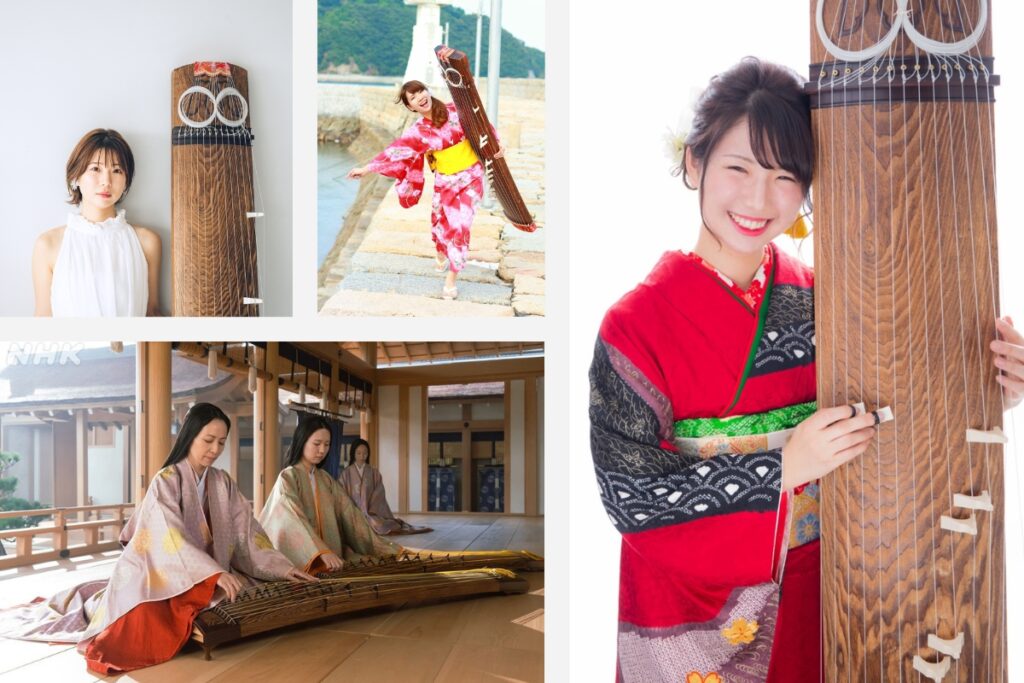
▼Q How did you start playing Japanese instruments?
The reason I started was because of my mother
My mother was a music lover, and she learned the shamisen, an old local folk song. As I followed her to the shamisen club,I was interested in Japanese traditional instruments, and told my mother that I want to play the shamisen!, as a child.Later, a relative introduced me to my first teacher, Ms.Tomomi Sueda, and our lesson began.
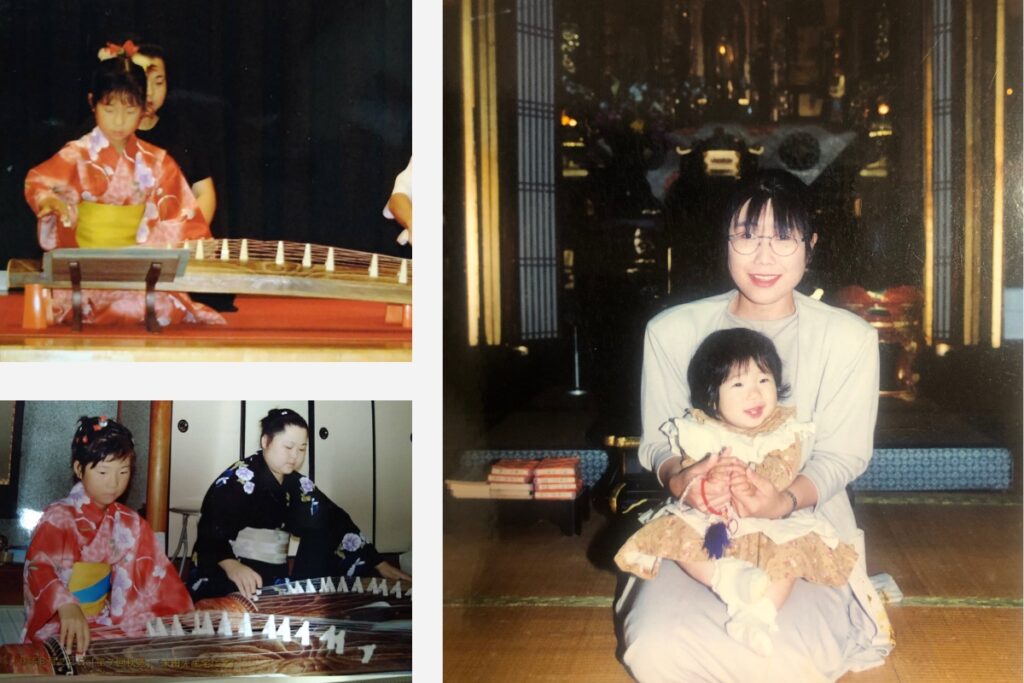
In Japan, there is a legend that if you start learning something on June 6, you will become a good performer. My birthday is June 4, so I remember that my parents let me start my practice as a birthday gift. I wanted to play the shamisen, but the shamisen had to be held while playing, it was difficult for me as a small child at that beginning time. So I started practicing the koto, which we put on the floor during play.
▼Q What made you decide to become a professional?
two wonderful encounters
There were two main reasons. One is when I was in elementary school. One day, my teacher encouraged me to participate in a national koto competition.There, I encountered many wonderful koto performances that I had never heard before. There are two schools of koto, the Ikuta School and the Yamada School. Each of them has a different way of playing and a different shape of picks used for playing. Furthermore, the way of playing and the music differ depending on the family (Oiemoto) that has inherited the school. In my case, I belong to the Nihon Todokai, which has inherited the traditional classics, so the tempo of the music is relatively slow. So, I have learned to play beautifully, one by one,
spinning the tones while singing a song. However, at the competition, I saw many overwhelming and powerful performances such as the sharp sound, the playing style of hitting koto, and the fast melody, which overturned my fundamental image of the koto. I was attracted to the possibilities of the koto. It was a memorable experience that changed my life. I also met great friends of my generation.
Second, I met a teacher the year after I participated in my first competition. That teacher’s name is Yoko Nishi, a koto player who is also active overseas. Her play style is modern and unconventional. As I mentioned earlier, I come from an Oiemoto school that focuses on classical performance, so my koto playing style and music are quite different from hers. She kindly visited a small school on my local island with her koto. I can still vividly recall thememory of that time.The children sat around the koto in a quiet classroom, where we could hear the birdschirping, and she performed live right in front of us. I remember that the sound of her performance seemed three-dimensional, as if she hadpainted a musical picture in the air, and I could feel the sparkling, splashing sound of hermusic. I was moved by her performance, which I had never heard before. At that moment, Istrongly felt that I wanted to play like her! Later,she kept in touch by sending letters from overseas. I was inspired not only by her music but also by her personality and sensitivity, and became a fan. Now that I am an adult, I have finally been able to perform with her.These two events inspired me to become a professional musician.and Thanks to meeting such a wonderful teacher.
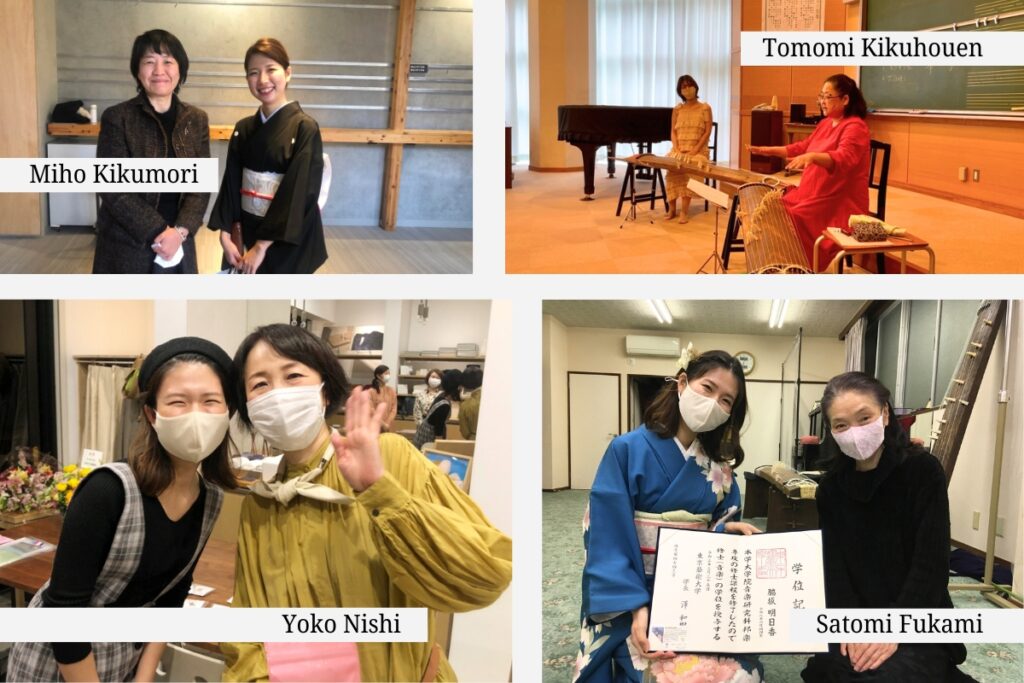
▼Q What is your hometown Hiroshima like?
I was born and raised in a tourist area of Hiroshima where traditional streetscapes remain.
I grew up on Osakishita Island, a small island in the Seto Inland Sea in Kure City, Hiroshima Prefecture. The area where my parents’ house is located is a tourist spot designated as an important townscape preservation district, and is often used as a filming location for commercials and movies, and as a stage for animations. Even today, people can enjoy the view of the beautiful old townscape and the Seto Inland Sea as if they have travelled into the past.
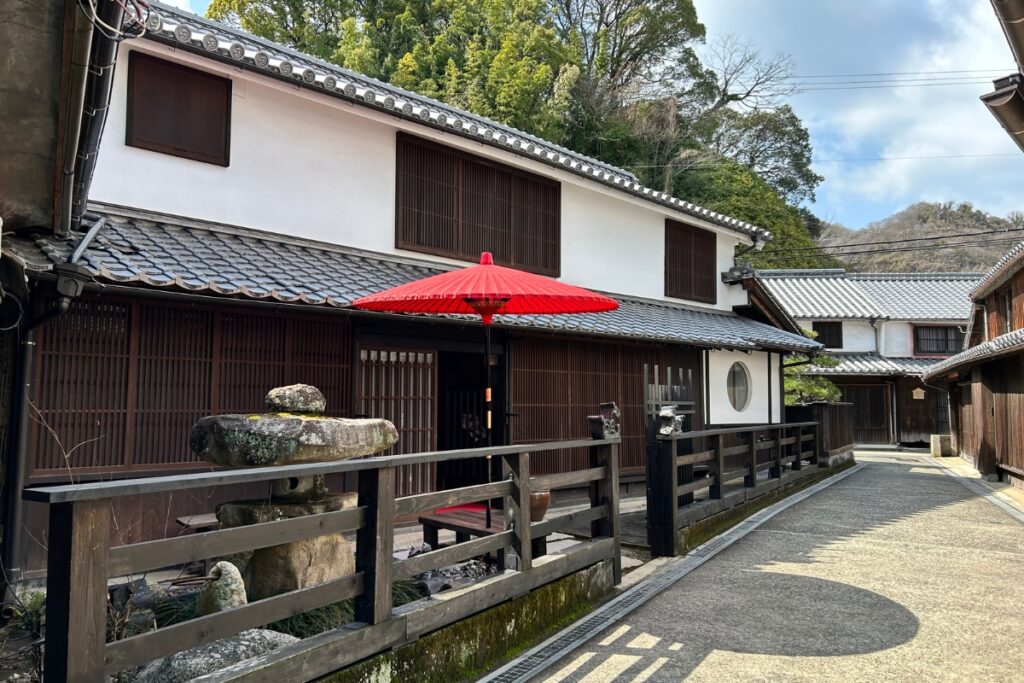
When I was a child, the local elders always talked to me as if I was their family. I spent summer with my family diving in the ocean, fishing, and getting lots of oranges and vegetables from my neighbors. My life was filled with nature. Even now, when I return to the island, they say to me,“Asuka, the koto player! You’ve grown up, how have you been?” My parents were in the tourism industry, so I was deeply involved in tourism and traditions from childhood.
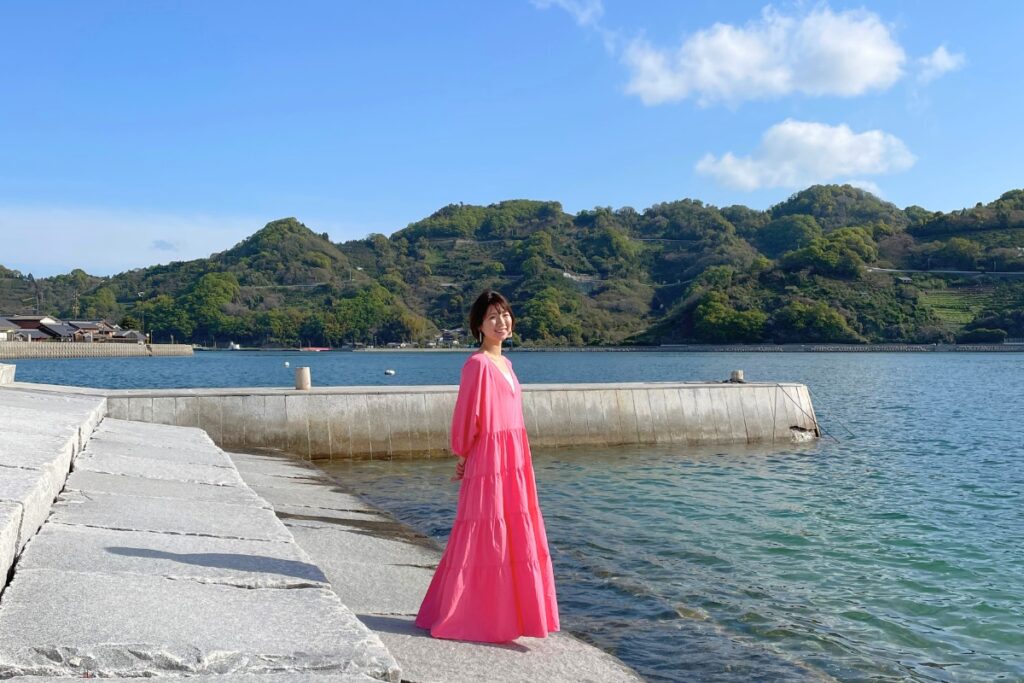
▼Q What is the most memorable performance stage you have ever given?
The presence of people who were moved by my performance.
There are many memorable performances, but the best was when an audience member burst into tears after hearing me perform.It was at a national competition for junior high school students. After my performance, an audience member told me,“Your performance moved me so much that I spontaneously burst into tears.” My friends who are excellent players said,“Your performance was wonderful.” I was so busy with myself that I don’t remember much about my performance. Still, it was an invaluable memory of knowing that my performance had touched someone’s heart.That experience may have been the starting point for me to seriously aim to become a professional player.
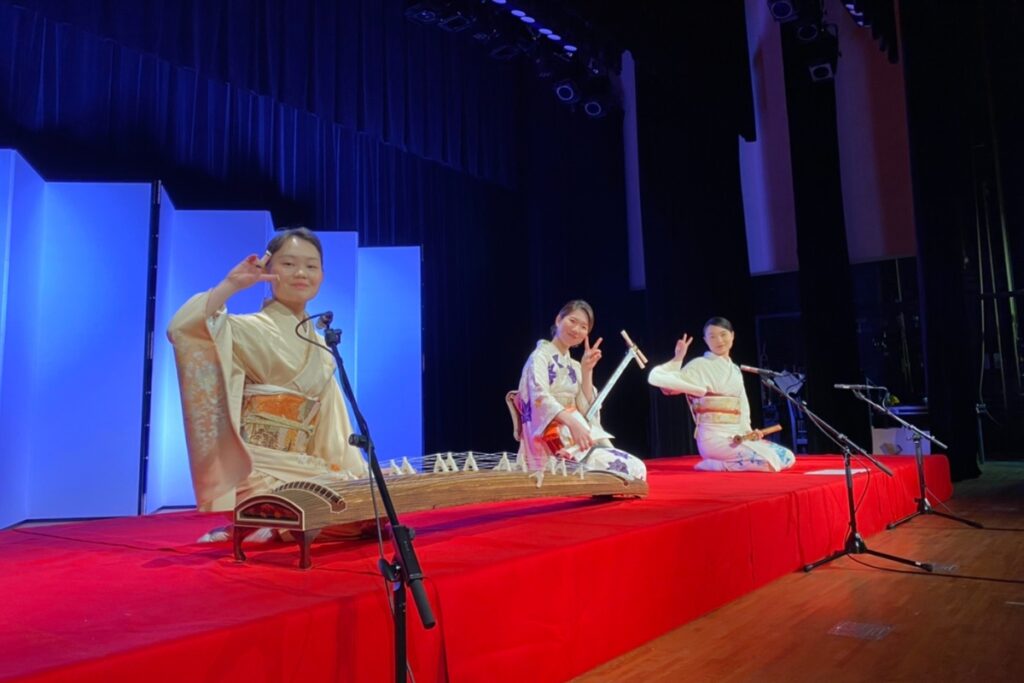
▼Q What are your Main activities ?
Koto, and 17 gen
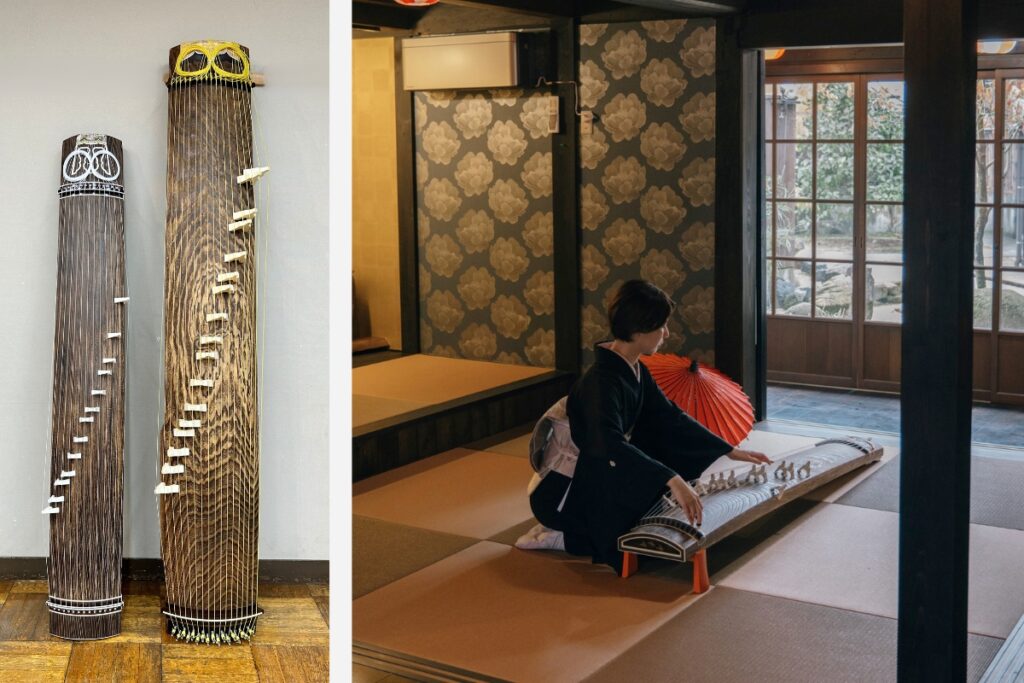
I play both the 13 gen, commonly known as the koto, and the 17-gen, a low-pitched. instrument. Usually I play as a two-piece group called spin. Sometimes we play our own original pieces, and sometimes to cool AI-generated sounds.Sometimes I play solo, other times I play on stage with anywhere from a few to 50+ people.We currently perform classical tunes, contemporary tunes, pop covers and originals at hall concerts, small live houses, and street events.
Jiuta Shamisen

I also play classical shamisen playing and singing. In fact, most koto teachers can also play the jiuta shamisen. In the past, koto was often played with three instruments, koto, shamisen, and shakuhachi, called sankyoku ensemble,and players have practiced koto and shamisen as a set.Although I have fewer opportunities to play the shamisen compared to koto, I would likemany people to hear this song and the quietly resonating jiuta shamisen tones.
Kokyu,Chinese fiddle
I have no experience playing Kokyu on stage, but I play it as part of my composition activities.
Composition
I compose music for Japanese instruments as well as playing. Five years ago, I was diagnosed with focal dystonia in my right hand, a neurological disease that makes it difficult for me to play traditional style playing.Currently, I play with the fingers I can use to play because of dystonia, but I made my mind up to compose music that is easy for me to play! Thanks to the people who enjoy listening to my original compositions, who purchase the sheet music I create, and who ask me to compose for them, I have been able to expand the scope of my musical activities.
music instructor
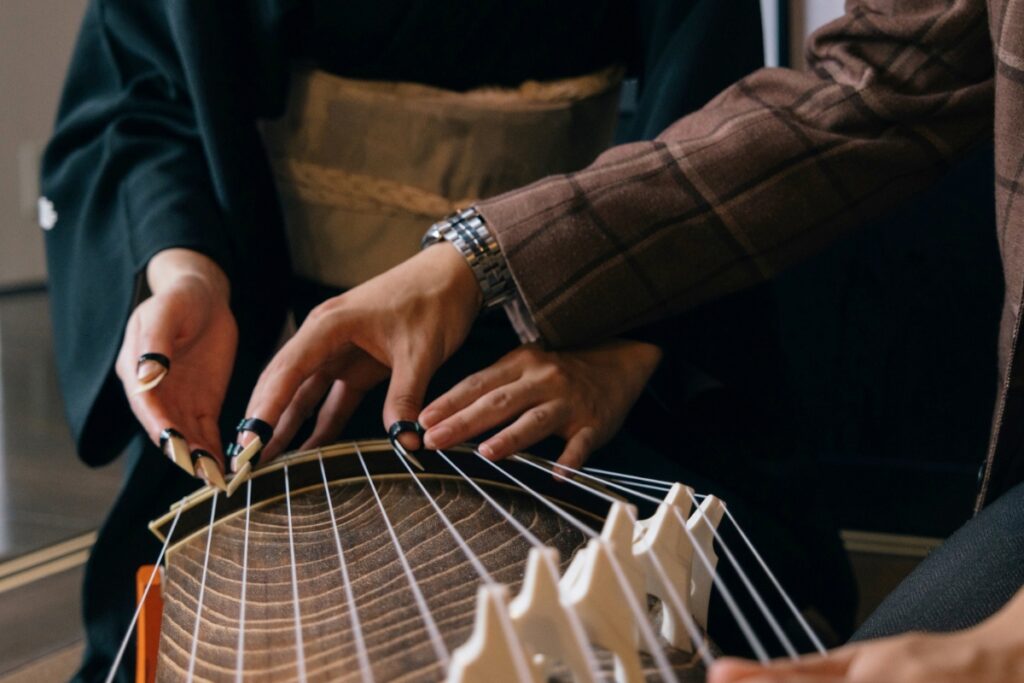
Currently I offer Koto lessons on Tuesdays and Saturdays. I try to make it a beginner’s class, which is gentler and more enjoyable than the typical practice. I also want to create opportunities for children who will live in a global society to learn Japanese culture without financial burden. Knowing one’s own culture makes it possible to build self-confidence and a sense of purpose in life. For example, we gain the thoughts, skills, and experiences of the many ancestors who have brought life to us, and one’s culture can be one’s identity when interacting with people from other countries.It is my hope that more people will be able to enrich their lives by experiencing Japanese culture.
▼Q Any thoughts on your activities?
Through traditional Japanese musical instruments, I have come into contact not only with the charm of the instruments,but also with the sincerity of many people. As the saying goes,“Life is full of peaks and valleys,” I feel that life is not always good, but at such times, I believe that what I love will support me. For me, it was music and Japanese
culture.And I believe that I have found such a purpose in life because of the life-changing emotional experiences that led me to it. I always want to provide such a life-changing emotional experience, and continue to share the appeal of traditional performing arts from various approaches.
▼Q What do you think of future Activities?
I would like to continue performing Japanese instruments in my own unique way. And in the future, I would like to support the same performers and create a new business model that utilizes the highly valuable traditional performing arts, focusing on the business of providing authentic traditional performing arts to people overseas who truly love Japan. While running my own performing business, I have come to think deeply about the problems faced by performers and the connection between the traditional performing arts and society. Traditional performing arts have been firmly protected by schools and the Iemoto system. In the future, I believe that the new value formation is necessary in order to connect the performing arts from the present day to future generations. I would like to take a new approach, in line with social trends, so that talented performers and traditional craftsmen can meet the people they want to meet, spend time with each other with a high level of mutual happiness,and understand the position of artists. This media was launched thanks to those who agreed with my dream. I would like to bring you inspiring experiences that will deepen and enrich your love of Japan and change your life.
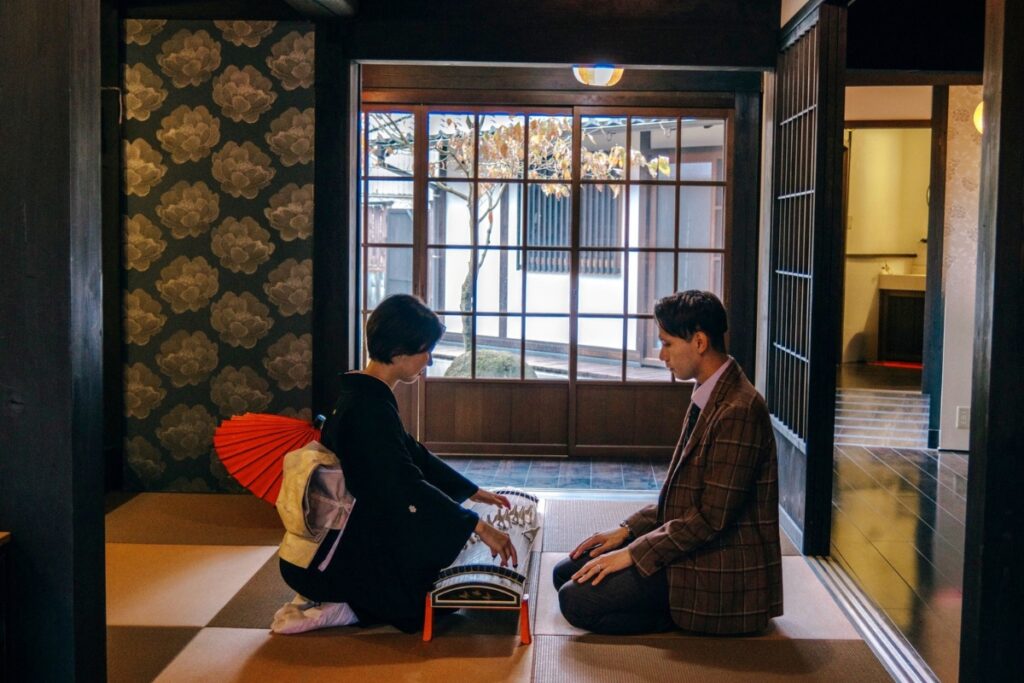
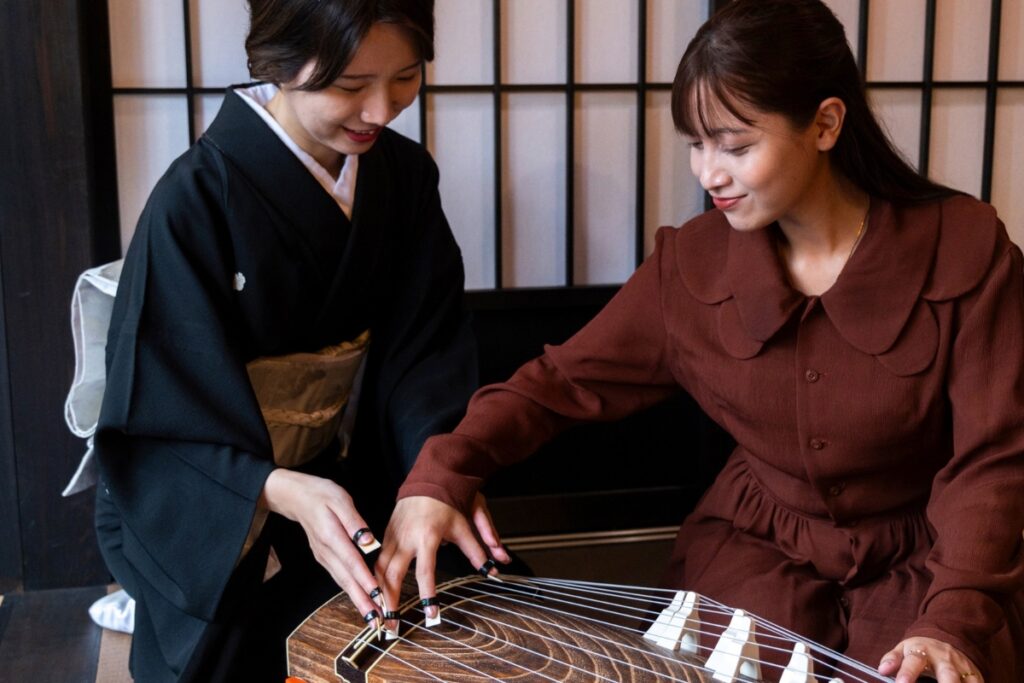
▼Q What is the appeal of Japanese traditional music?
It is difficult to describe the whole appeal of Japanese musical instruments in one sentence, so I would like to talk about the appeal of the koto from my perspective. The delicate fingering and the beautiful sound that blends into the silence. I would like you to listen to this instrument that makes you imagine the beautiful nature of Japan, such as the movement of wind and water. I hope you will listen to it and try it for yourself! Not only by listening to music, but also by touching the koto, a well-known traditional craft, you will unknowingly touch Japanese manners and spirit, and gain a deeper understanding of Japanese culture. I would like you all to experience and feel the delicate and uniquely Japanese music of classical performance as well as the fusion of modernity and the performance of the koto that exceeds your imagination.
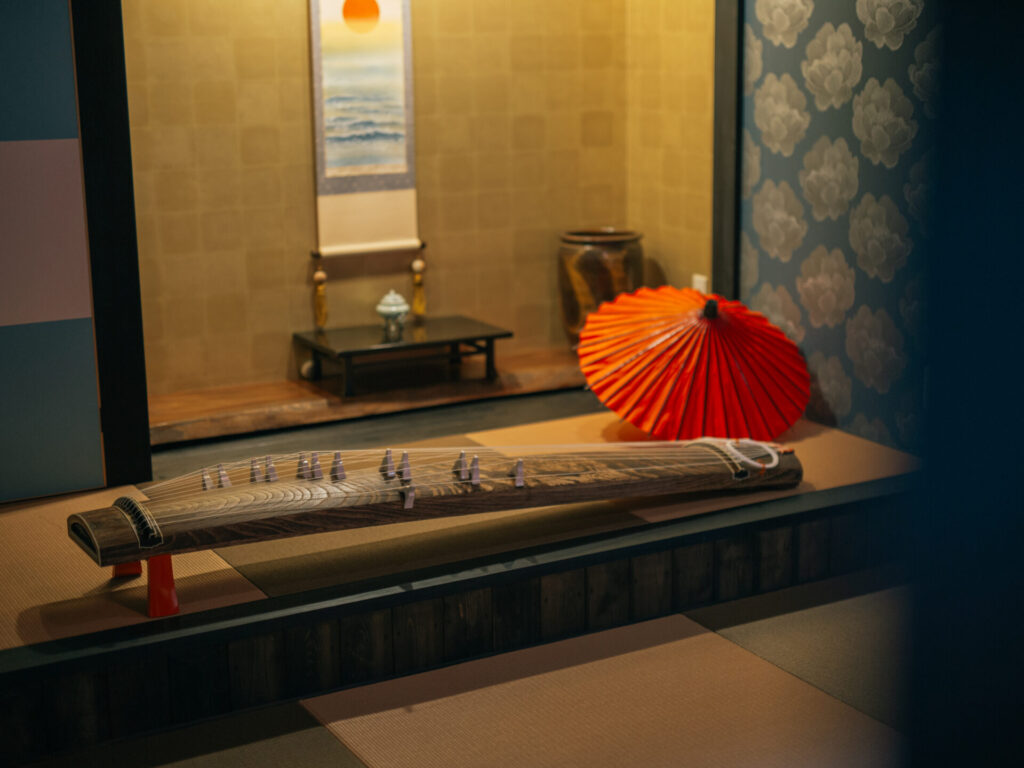
▼Q What beauty of Japan do you want foreigners to know?
The beauty of Japan is hidden not only in Kyoto and Tokyo, but also in the countryside. And the charms are not limited to places, but include Kabuki, shamisen, koto, kimono, food, and many other aspects of Japanese culture. Each of them is beautiful in its own way, and I believe that the hearts of those who inherit them have irreplaceable value. In Japan, we may not yet have the environment in place for foreign visitors to encounter the Japanese culture they wish to encounter. However, we, as a traditional performing arts company, would like to entertain them as much as possible according to their wishes. So please feel free to contact us.

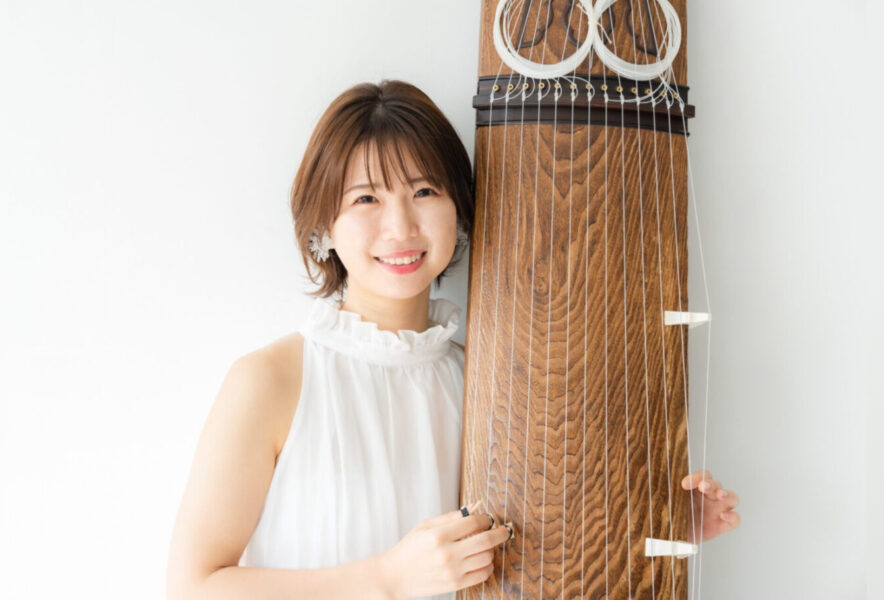
Comment